
Robinson Crusoe is an English adventure novel by Daniel Defoe, first published on 25 April 1719. Written with a combination of Epistolary, confessional, and didactic forms, the book follows the title character after he is cast away and spends 28 years on a remote tropical desert island near the coasts of Venezuela and Trinidad, encountering cannibals, captives, and mutineers before being rescued. The story has been thought to be based on the life of Alexander Selkirk, a Scottish castaway who lived for four years on a Pacific island called "Más a Tierra" which was renamed Robinson Crusoe Island in 1966. Pedro Serrano is another real-life castaway whose story might have inspired the novel.

Johann David Wyss was a Swiss author, best remembered for his book The Swiss Family Robinson (1812). He was born and died in Bern. It is said that he was inspired by Daniel Defoe's Robinson Crusoe, but wanted to write a story from which his own children would learn, as the father in the story taught important lessons to his children. The Swiss Family Robinson was first published in German in 1812, then translated into English two years later. The book was edited by his son, Johann Rudolf Wyss, a scholar known for writing the Swiss national anthem, Rufst du, mein Vaterland. Another of Wyss's sons, Johann Emmanuel Wyss, illustrated the book. Johann David Wyss died in 1818 at the age of 74. He lived longer than his son Johann Rudolf, who would die twelve years later at the age of 48.

Friday is one of the main characters of Daniel Defoe's 1719 novel Robinson Crusoe and its sequel The Farther Adventures of Robinson Crusoe. Robinson Crusoe names the man Friday, with whom he cannot at first communicate, because they first meet on that day. The character is the source of the expression "Man Friday", used to describe a male personal assistant or servant, especially one who is particularly competent or loyal.
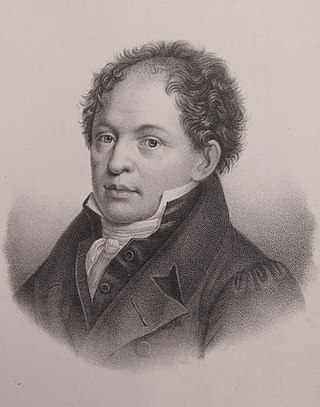
Johann Rudolf Wyss was a Swiss author, writer, and folklorist who wrote the words to the former Swiss national anthem Rufst Du, mein Vaterland in 1811, and also edited the novel The Swiss Family Robinson, written by his father Johann David Wyss, published in 1812.
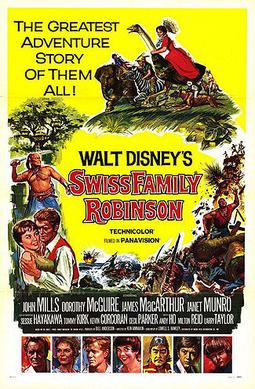
Swiss Family Robinson is a 1960 American adventure film starring John Mills, Dorothy McGuire, James MacArthur, Janet Munro, Tommy Kirk, and Kevin Corcoran in a tale of a shipwrecked family building an island home. It was the second feature film based on the 1812 novel The Swiss Family Robinson by Johann David Wyss, a previous adaptation having been released by RKO Pictures in 1940. Directed by Ken Annakin and shot in Tobago and Pinewood Studios outside London, it was the first widescreen Walt Disney Pictures film shot with Panavision lenses; when shooting in widescreen, Disney had almost always used a matted wide screen or filmed in CinemaScope.

The Mysterious Island is a novel by Jules Verne, published in 1875. The first edition, published by Hetzel, contains illustrations by Jules Férat. The novel is a crossover sequel to Verne's famous Twenty Thousand Leagues Under the Seas (1870) and In Search of the Castaways (1867–68), though its themes are vastly different from those books. An early draft of the novel, rejected by Verne's publisher and wholly reconceived before publication, was titled Shipwrecked Family: Marooned with Uncle Robinson, indicating the influence of the novels Robinson Crusoe and The Swiss Family Robinson. Verne developed a similar theme in his novel, Godfrey Morgan.
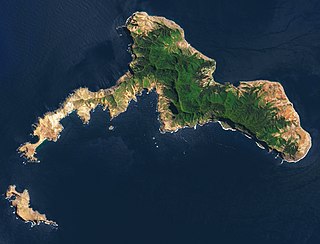
Robinson Crusoe Island is the second largest of the Juan Fernández Islands, situated 670 km west of San Antonio, Chile, in the South Pacific Ocean. It is the more populous of the inhabited islands in the archipelago, with most of that in the town of San Juan Bautista at Cumberland Bay on the island's north coast. The island was formerly known as Más a Tierra.
The Adventures of Swiss Family Robinson is a 1998 family adventure series that originally aired on Pax. Based on the 1812 novel The Swiss Family Robinson by Johann David Wyss, it follows the adventures of nine survivors of a shipwreck as they attempt to adapt to life on a deserted island. It lasted for one season, with 10 three episode segments.

Robinsonade is a literary genre of fiction wherein the protagonist is suddenly separated from civilization, usually by being shipwrecked or marooned on a secluded and uninhabited island, and must improvise the means of their survival from the limited resources at hand. The genre takes its name from the 1719 novel Robinson Crusoe by Daniel Defoe. The success of this novel spawned so many imitations that its name was used to define a genre, which is sometimes described simply as a "desert island story" or a "castaway narrative".

A castaway is a person who is cast adrift or ashore. While the situation usually happens after a shipwreck, some people voluntarily stay behind on a desert island, either to evade captors or the world in general. A person may also be left ashore as punishment (marooned).

Two Years' Vacation is an adventure novel by Jules Verne, published in 1888. The story tells of the fortunes of a group of schoolboys stranded on a deserted island in the South Pacific, and of their struggles to overcome adversity. In his preface to the book, Verne explains that his goals were to create a Robinson Crusoe-like environment for children, and to show the world what the intelligence and bravery of a child were capable of when put to the test.

Swiss Family Robinson is a 1940 American film released by RKO Radio Pictures and directed by Edward Ludwig. It is based on the 1812 novel The Swiss Family Robinson by Johann David Wyss and is the first feature-length film version of the story.

The Swiss Family Robinson: Flone of the Mysterious Island is an anime series produced by Nippon Animation.
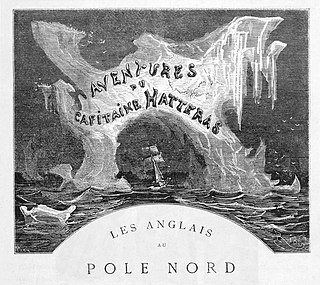
The Adventures of Captain Hatteras is an adventure novel by Jules Verne in two parts: The English at the North Pole and The Desert of Ice.
The Adventures of Robinson Crusoe is a French-German children's television drama series made by Franco London Films and based on Daniel Defoe's 1719 novel Robinson Crusoe. The show was first aired in Germany in October 1964 under the title Robinson Crusoe as four 90-minute episodes by co-producers ZDF television, and syndicated in the USA the same year. It was first aired in the UK in 1965 as a 13-part serial. This English dubbed version produced by Henry Deutschmeister also had a new musical soundtrack composed by Robert Mellin and Gian-Piero Reverberi the music composed by Georges Van Parys for the French/German original. The production concentrated not only on events on the island but included Crusoe's other adventures, told in flashback.

Godfrey Morgan: A Californian Mystery, also published as School for Crusoes, is an 1882 adventure novel by French writer Jules Verne. The novel tells of a wealthy young man, Godfrey Morgan, who, with his deportment instructor, Professor T. Artelett, embark from San Francisco, California, on a round-the-world ocean voyage. They are cast away on an uninhabited Pacific island, where they must endure a series of adversities. Later, they encounter an African slave, Carefinotu, brought to the island by cannibals. In the end, the trio manage to work together and survive on the island.
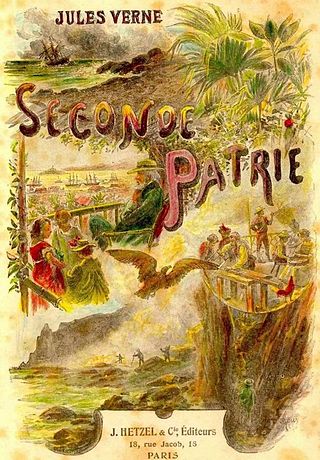
The Castaways of the Flag is an adventure novel written by Jules Verne. The two volumes of the novel were initially published in English translation as two separate volumes: Their Island Home and The Castaways of the Flag. Later reprints were published as The Castaways of the Flag.
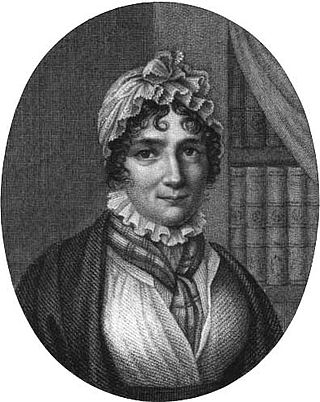
Isabelle de Montolieu (1751–1832) was a Swiss novelist and translator. She wrote in and translated to the French language. Montolieu penned a few original novels and over 100 volumes of translations. She wrote the first French translation of Jane Austen's Sense and Sensibility and Persuasion.
Windham Classics Corporation was a subsidiary of Spinnaker Software. The corporation was founded in 1984 and went defunct circa 1985/86 or later. The headquarters were in Cambridge, Massachusetts, USA.

Masterman Ready, or the Wreck of the Pacific is a robinsonade children's novel published in 1841 by Frederick Marryat. The book follows the adventures of the Seagrave family who are shipwrecked at sea, and survive on a desert island with the assistance of veteran sailor Masterman Ready.


















